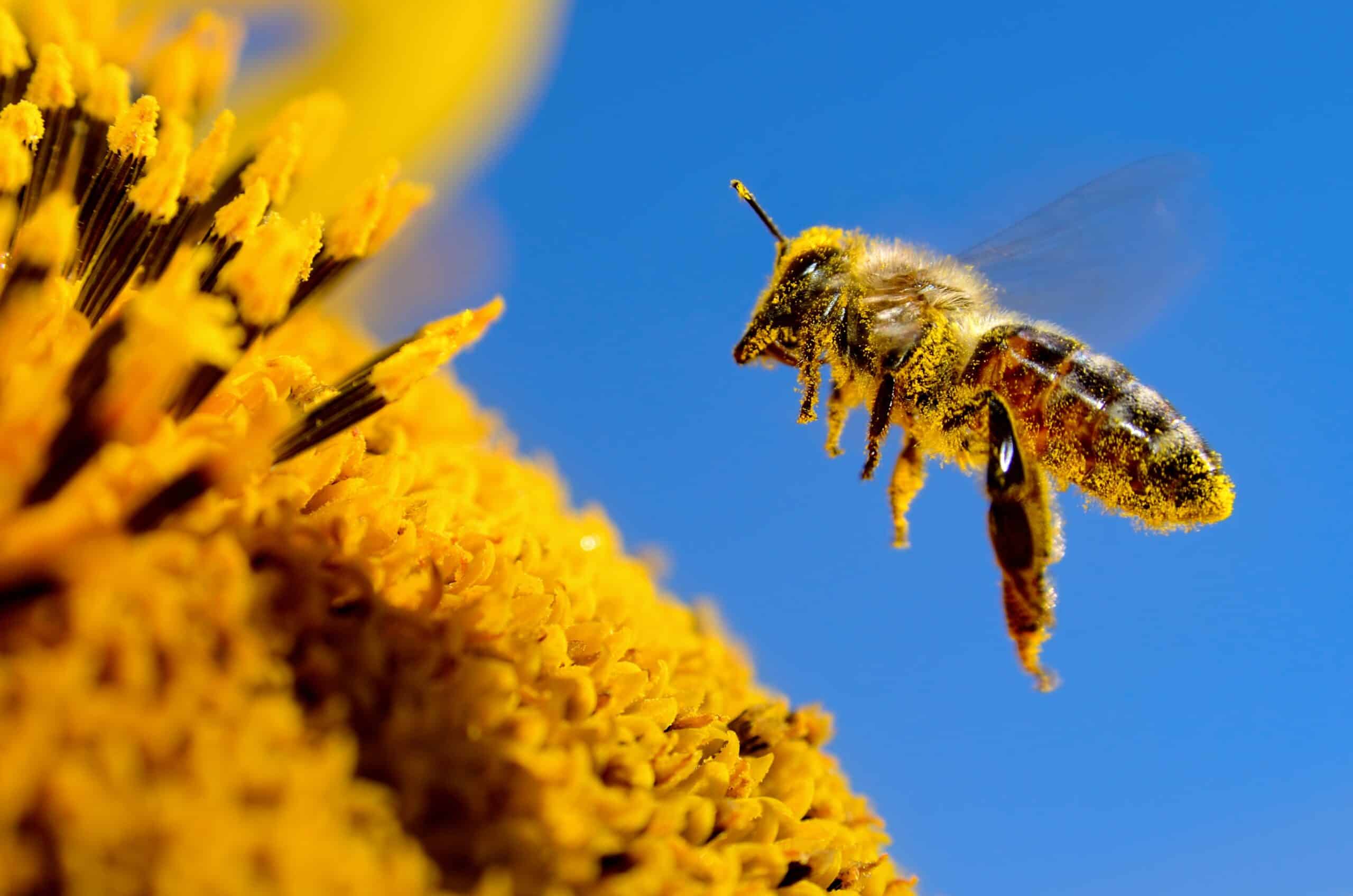The Ultimate Guide To Identifying Bees In Your Garden
Bees are essential pollinators that play a pivotal role in maintaining healthy ecosystems and supporting food production. These industrious insects transfer pollen from one flower to another, facilitating the growth of fruits, vegetables, and nuts.
In this article, we’ll discuss the Importance of Bees (Honeybee, Bumblee, Mason Bee, Leafcutter Bee, South Eastern Blueberry Bee, and Squash Bee); Threats to Bees, Physical Characteristics and Behavioural Traits.
Observing bees in your garden offers a chance to learn about these fascinating creatures and contribute to their conservation. By providing a habitat for bees, you help ensure the continuation of their vital work.
Supporting bees not only enhances your garden’s beauty but also sustains a crucial part of our natural world.
Why Bees Matter
Importance of Bees
Bees play a crucial role in both natural ecosystems and human agriculture, serving as indispensable pollinators that support biodiversity, food production, and environmental health.
Here are the key reasons why bees are vital:
1. Pollination
Agricultural Crops: Bees pollinate about 75% of the world’s flowering plants and 35% of global food crops, including fruits, vegetables, nuts, and seeds.
Wild Plants: Bees facilitate the reproduction of wild plants, thereby maintaining healthy ecosystems and biodiversity.
2. Biodiversity
Ecosystem Health: Bees support the growth of trees, flowers, and other plants that provide food and shelter for various animals.
Genetic Diversity: Through cross-pollination, bees enhance genetic diversity within plant species, boosting resilience against diseases and environmental changes.
3. Food Production
Crop Yields: Bee pollination increases both the quantity and quality of agricultural produce. Many crops rely on bees to produce fruits and seeds.
Economic Value: The global economic value of pollination services provided by bees is estimated to be worth billions of dollars annually.
4. Environmental Indicators
Ecosystem Health: Bees act as indicators of environmental health, offering insights into biodiversity and ecosystem stability.
Habitat Health: The presence and well-being of bee populations reflect the overall health of their habitats.
5. Medicinal Products
Honey: Produced by honeybees, honey has antibacterial, anti-inflammatory, and antioxidant properties, making it valuable for culinary and medicinal uses.
Propolis and Royal Jelly: Other bee products like propolis and royal jelly possess therapeutic properties and are used in traditional medicine and cosmetics.
6. Soil Health
Nutrient Cycling: Bees indirectly contribute to soil health by pollinating plants that add organic matter to the soil.
Plant Growth: Healthy plants supported by bee pollination help prevent soil erosion and maintain soil structure.
7. Cultural Significance
Symbolism: Bees symbolize hard work, diligence, and community in various cultures.
Education and Awareness: Bees offer opportunities for education on ecology, conservation, and sustainability.
8. Ecosystem Services
Supporting Wildlife: Pollinated plants provide food and habitat for a diverse range of wildlife, including birds, mammals, and other insects.
Carbon Sequestration: By promoting plant growth, bees indirectly aid in carbon sequestration, helping to mitigate climate change.
Recognising the importance of bees underscores the urgency to protect and conserve these vital pollinators for the benefit of our environment, economy, and future generations.
Threats to Bees
Bees face numerous critical threats that contribute to their declining populations. Understanding these challenges is crucial for developing strategies to protect and conserve bee species.
1. Habitat Loss
Urbanisation: The expansion of cities and infrastructure diminishes natural habitats.
Agricultural Practices: Large-scale monocultures and deforestation eradicate diverse flora.
Land Development: Transforming natural landscapes into residential or commercial areas reduces bee habitats.
2. Pesticide Use
Neonicotinoids: This class of insecticides harms bees by affecting their nervous systems.
Chemical Sprays: Broad-spectrum pesticides can kill non-target insects, including bees.
Herbicides: These reduce the availability of flowering plants that bees depend on for food.
3. Climate Change
Temperature Fluctuations: These impact bees’ ability to forage and reproduce.
Phenological Mismatch: Altered flowering times can disrupt the synchrony between bees and their food sources.
Extreme Weather Events: Severe weather can destroy habitats and reduce food availability.
4. Diseases and Parasites
Varroa Mite: This parasitic mite weakens bees and spreads viruses.
Nosema: A fungal infection that affects the digestive systems of bees.
Deformed Wing Virus: This viral disease causes physical deformities and weakens bees.
5. Pollution
Air Pollution: This reduces the scent of flowers, making it harder for bees to locate nectar.
Water Pollution: Contaminated water sources hinder bees’ hydration and hive cooling.
6. Competition from Non-native Species
Invasive Species: Non-native bees and other pollinators can outcompete native bees for resources.
Hybridisation: Breeding between native and non-native species can dilute gene pools and affect resilience.
7. Poor Nutrition
Monocultures: Limited plant variety provides insufficient nutrition.
Flowerless Landscapes: The lack of flowering plants reduces food availability for bees.
By addressing and mitigating these threats, we can foster environments that support healthy and thriving bee populations.
General Characteristics of Bees
Physical Characteristics
Bees have distinctive physical features, including:
Body Structure: Comprising three main parts – head, thorax, and abdomen. The head houses important sensory organs, the thorax is connected to the wings and legs, and the abdomen contains the digestive and reproductive organs.
Wings: Equipped with two pairs of wings that overlap when at rest. The front pair is larger than the hind pair, and they work in unison to allow bees to fly with remarkable agility.
Antennae: Featuring two antennae used for smelling and sensing their environment. These antennae are crucial for navigation, finding food, and communicating with other bees.
Hair: Often have hairy bodies, which aid in pollen collection. These tiny hairs, known as setae, trap pollen as bees move from flower to flower, playing a vital role in pollination.
Behavioral Traits
Bees display a range of fascinating behaviors, such as:
Pollination: Bees gather nectar and pollen from flowers, which not only sustains them but also plays a pivotal role in plant fertilisation, making bees indispensable to agriculture and ecosystems.
Nesting: Bees construct nests in diverse locations, including underground, within wood, or inside plant stems. Each species has unique nesting habits; honeybees build intricate hives, while bumblebees often occupy abandoned rodent burrows.
Communication: Bees use pheromones, dances, and buzzing sounds to relay information. A remarkable example is the “waggle dance,” through which bees inform their hive mates about the location of food sources.
Common Types of Bees in Gardens
Gardens often host a diverse array of bees, each playing a vital role in pollination and maintaining ecosystem health. By recognising the common types of bees in gardens, gardeners can better support these essential insects.
Honeybee (Apis Genus)
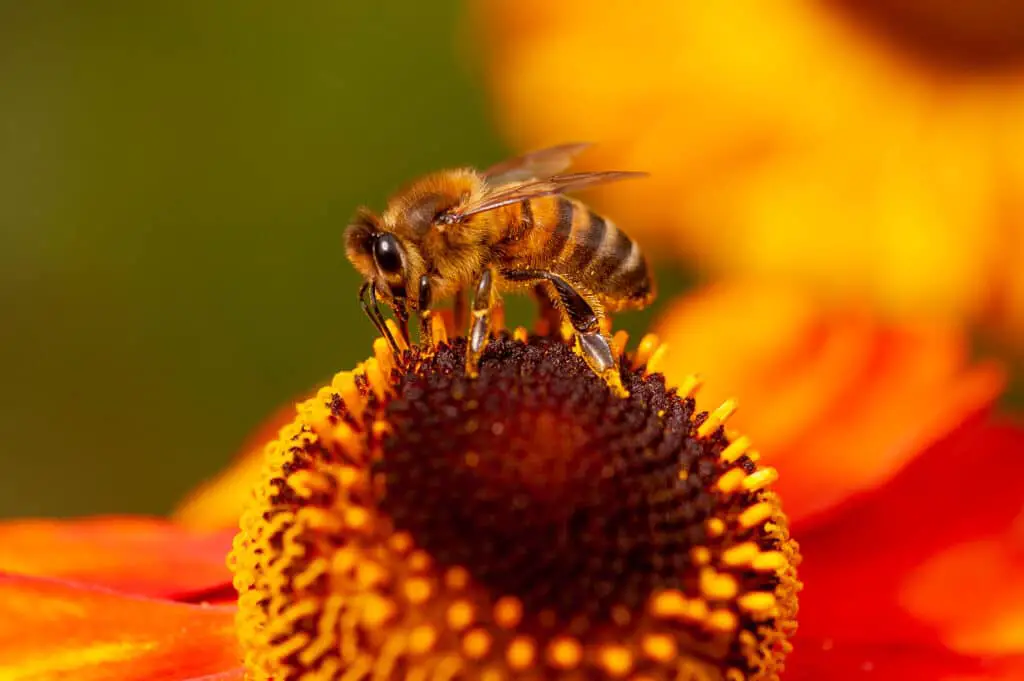
Appearance: Small and golden-brown with distinctive black stripes, honeybees have a slightly fuzzy look and are easily recognizable by their color patterns.
Behavior: Highly social, honeybees live in large colonies, often numbering in the thousands. They are renowned for their honey production and intricate hive structures.
Habitat: Typically found in hives maintained by beekeepers or naturally in tree cavities, honeybees can also nest in buildings or other protected areas.
Bumblebee (Bombus Genus)
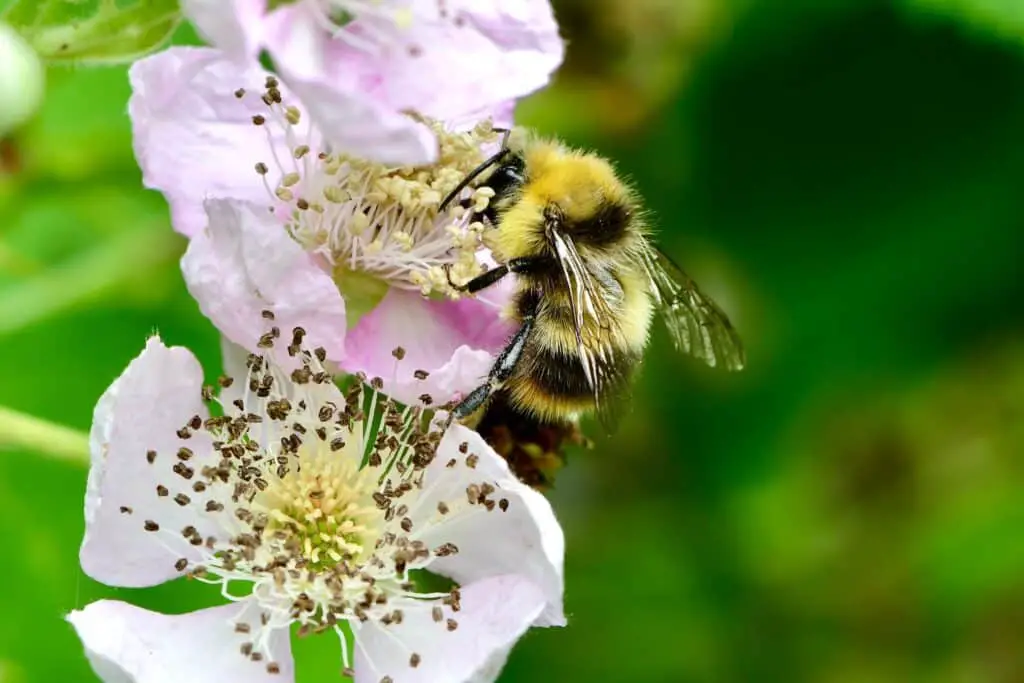
Appearance: Large and furry with characteristic black and yellow markings, some species of bumblebees may also display orange and white patterns.
Behavior: Known for their loud buzzing, bumblebees are efficient pollinators often seen visiting flowers in search of nectar and pollen.
Habitat: Bumblebees nest either in the ground or in above-ground cavities such as abandoned rodent burrows, compost piles, or other sheltered locations.
Mason Bee (Osmia Genus)
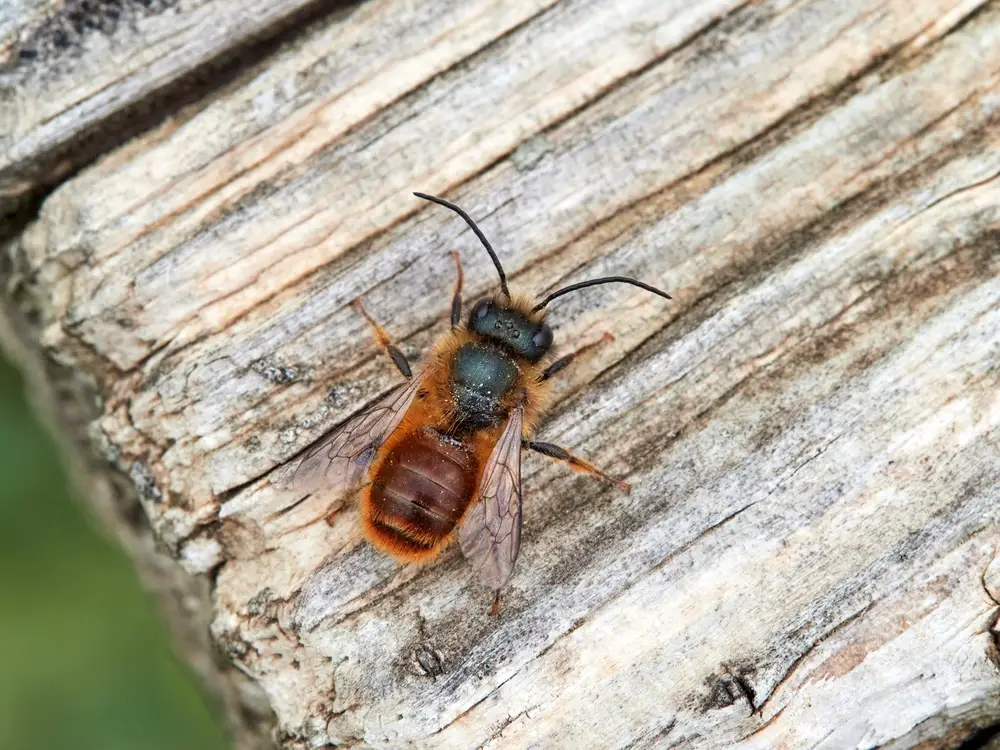
Appearance: Smaller than honeybees, mason bees exhibit metallic blue or green hues and have less hairy bodies.
Behavior: Solitary in nature, mason bees use mud to construct partitioned nests within natural cavities to protect their offspring.
Habitat: Found in hollow stems, wood tunnels, or specially designed bee houses, mason bees often prefer sunny locations with abundant nesting materials nearby.
Leafcutter Bee (Megachile Genus)
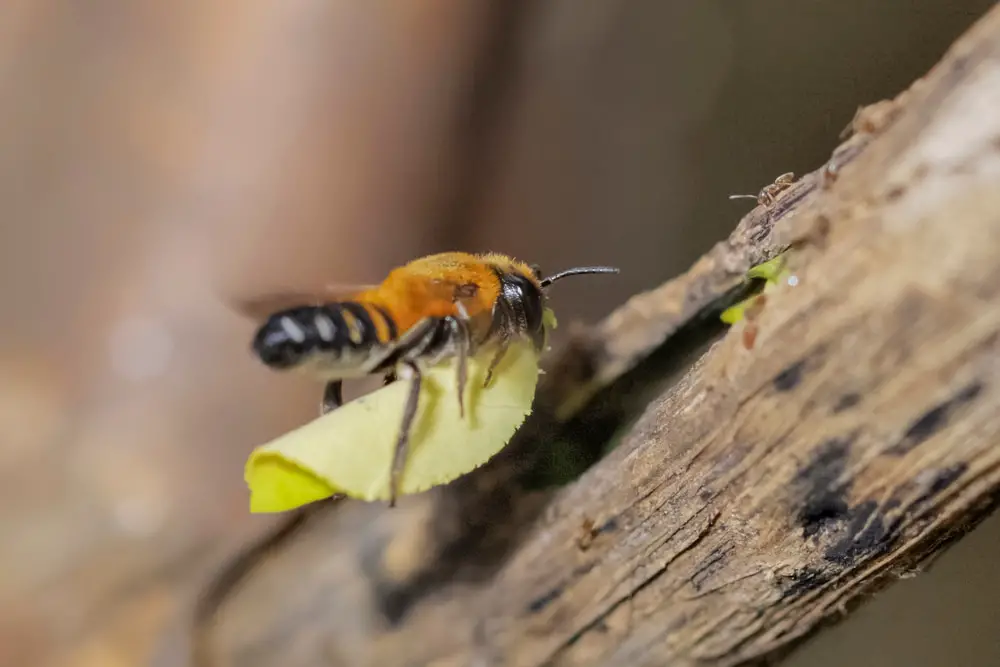
Appearance: Medium-sized with dark bodies and light bands, leafcutter bees have strong mandibles for cutting leaves.
Behavior: Solitary and unique in their nesting behavior, these bees cut circular pieces of leaves to line their nests, creating a safe environment for their larvae.
Habitat: Nesting in soil, wood, or stem cavities, leafcutter bees are often found in gardens with plenty of leafy plants for nesting material.
Southeastern Blueberry Bee (Habropoda Laboriosa)
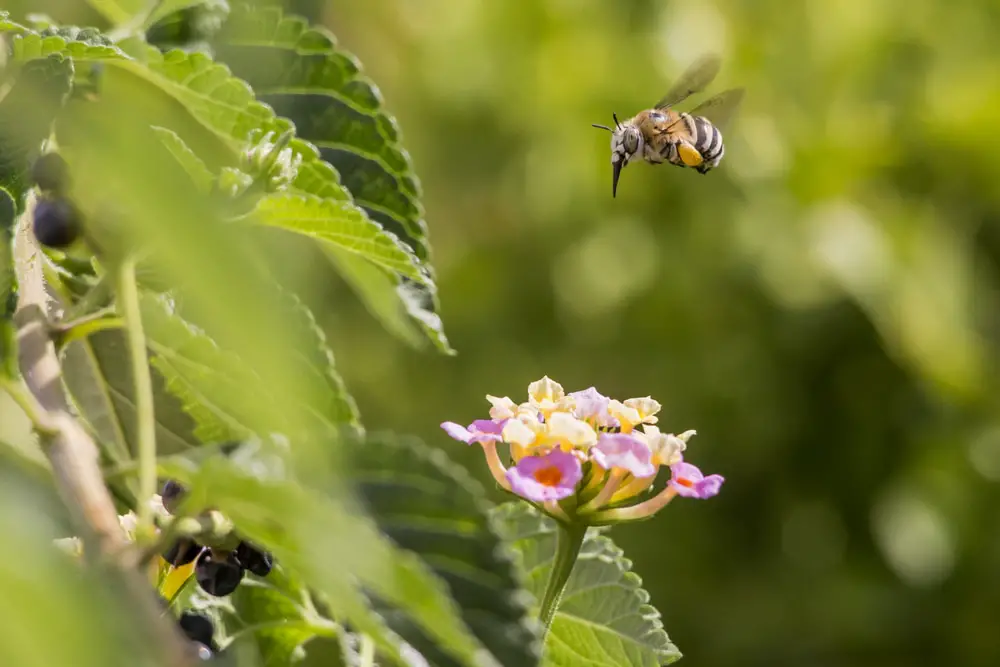
Appearance: Resembling bumblebees but generally smaller and more robust, these bees have strong, stout bodies ideal for efficient pollination.
Behavior: Vital for blueberry crops, Southeastern Blueberry Bees are excellent pollinators of blueberries and are primarily active in early spring when blueberries bloom.
Habitat: They nest in the ground, often near blueberry bushes, where they can easily access their primary food source.
Squash Bee (Peponapis and Xenoglossa Genera)
Appearance: Similar to honeybees but with longer antennae and a fuzzier appearance, squash bees are specially adapted for pollinating squash plants.
Behavior: Specialists in pollinating squash and pumpkin plants, these bees are most active early in the morning when squash flowers are open.
Habitat: Preferring loose, sandy soil for their nests, squash bees typically nest in the ground near squash plants.
Understanding these common types of bees enables gardeners to appreciate the diversity and vital roles these insects play in pollination and ecosystem health.
Creating a Bee-Friendly Garden
Designing a bee-friendly garden not only enhances the beauty of your outdoor space but also supports the vital role bees play in our ecosystem. By cultivating a habitat abundant in nectar and pollen, you contribute to the sustenance of these essential pollinators.
Plant Selection
Creating a bee-friendly garden in South Africa involves selecting plants that offer nectar and pollen throughout the year. Here are some native and non-native plants that are particularly beneficial for bees in South Africa:
Native Plants
1. Aloe (Aloe spp.)
Blooms: Winter to Early Spring
Benefits: High nectar production attracts a variety of pollinators.
2. Wild Dagga (Leonotis leonurus)
Blooms: Summer to Autumn
Benefits: Bright orange flowers rich in nectar.
3. Cape Honeysuckle (Tecoma capensis)
Blooms: Year-round, especially in warm climates
Benefits: Tubular flowers attract bees and other pollinators.
4. African Blue Basil (Ocimum kilimandscharicum x basilicum)
Blooms: Year-round
Benefits: Highly aromatic, attracting many types of bees.
5. Blue Waterlily (Nymphaea nouchali)
Blooms: Summer
Benefits: Provides ample pollen and nectar, attracting bees and other insects.
6. Kraalbos (Galenia africana)
Blooms: Spring to Summer
Benefits: Small yellow flowers are very attractive to bees.
7. Erythrina (Erythrina lysistemon)
Blooms: Spring
Benefits: Red flowers provide abundant nectar.
8. Plectranthus (Plectranthus spp.)
Blooms: Late Summer to Autumn
Benefits: Dense flower spikes attract bees.
Non-Native Plants (Beneficial to Bees)
1. Lavender (Lavandula spp.)
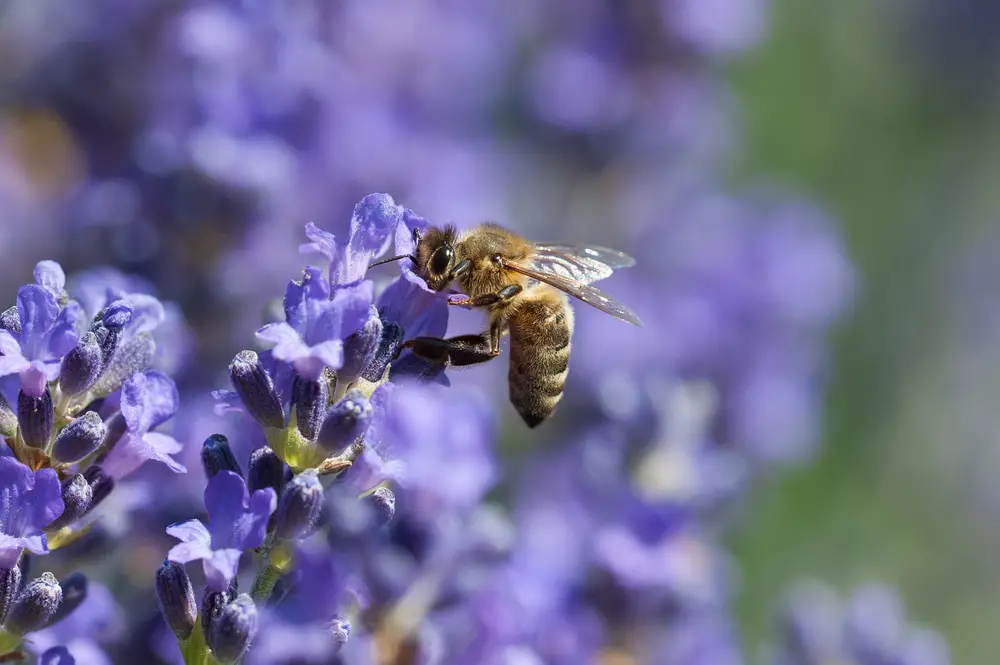
Blooms: Spring to Summer
Benefits: Strong scent and plentiful nectar.
2. Rosemary (Rosmarinus officinalis)
Blooms: Winter to Spring
Benefits: Aromatic leaves and small blue flowers attract bees.
3. Borage (Borago officinalis)
Blooms: Summer
Benefits: Star-shaped blue flowers are very attractive to bees.
4. Sunflowers (Helianthus annuus)
Blooms: Summer to Autumn
Benefits: Large flower heads produce ample pollen.
5. Salvia (Salvia spp.)
Blooms: Spring to Autumn
Benefits: Variety of colors and a reliable nectar source.
6. Coriander (Coriandrum sativum)
Blooms: Spring to Summer
Benefits: Umbrella-like clusters of tiny flowers attract bees.
7. Thyme (Thymus vulgaris)
Blooms: Spring to Summer
Benefits: Small flowers provide nectar and pollen.
Garden Design
Design your garden to include diverse habitats, such as flowering borders, meadows, and nesting sites, creating an inviting environment for bees. Provide bare ground, dead wood, or bee houses for solitary bees to nest.
Adding water sources, like shallow dishes with pebbles, can benefit bees by giving them places to drink and rest. A well-thought-out garden design not only supports bee populations but also creates a vibrant, dynamic outdoor space.
Avoiding Pesticides
Steer clear of chemical pesticides, as they can be extremely harmful to bees and other beneficial insects. Follow organic gardening practices and natural pest control methods, such as introducing beneficial insects like ladybugs or using insecticidal soaps and neem oil.
Companion planting can also help deter pests naturally. By maintaining a healthy ecosystem in your garden, you reduce the need for harmful chemicals and create a safer environment for pollinators.
Observing and Documenting Bees
Tools for Observation
Use tools like magnifying glasses, cameras, and notebooks to observe and document bee species in your garden. Binoculars with close focus capabilities can also be helpful, allowing you to see intricate details without disturbing the bees. Additionally, digital apps can assist in identifying different bee species and recording your findings.
Photography Tips
Approach Slowly: Move gently to avoid startling the bees, ensuring a more natural behavior and better photographic opportunities.
Use Macro Lens: Capture detailed close-up shots that highlight the bees’ features, such as their wings, antennae, and pollen baskets.
Natural Light: Use natural light for clearer images, as it provides better color accuracy and reduces the need for artificial lighting that might disturb the bees.
Patience: Wait for bees to settle on flowers for the best shots, allowing you to capture them in their natural habitat and behavior without causing them stress.
Citizen Science
Participate in citizen science projects like BeeSpotter or Bumble Bee Watch to contribute your observations and help track bee populations.
These projects often provide platforms for uploading your data and photos, which researchers used to monitor bee health and distribution. Engaging in these activities not only aids scientific research but also raises awareness about the importance of bees in our ecosystems.
Conclusion
Creating a bee-friendly garden supports essential pollinators and is very fulfilling. By learning about the different types of bees and their roles, you can cultivate a thriving ecosystem.
Plant a variety of native flowers that bloom at different times to ensure a continuous food source.
Avoid pesticides and provide water sources, like shallow dishes with pebbles, to keep bees hydrated.
With some effort, your garden can become a bee sanctuary, enhancing the environment.

